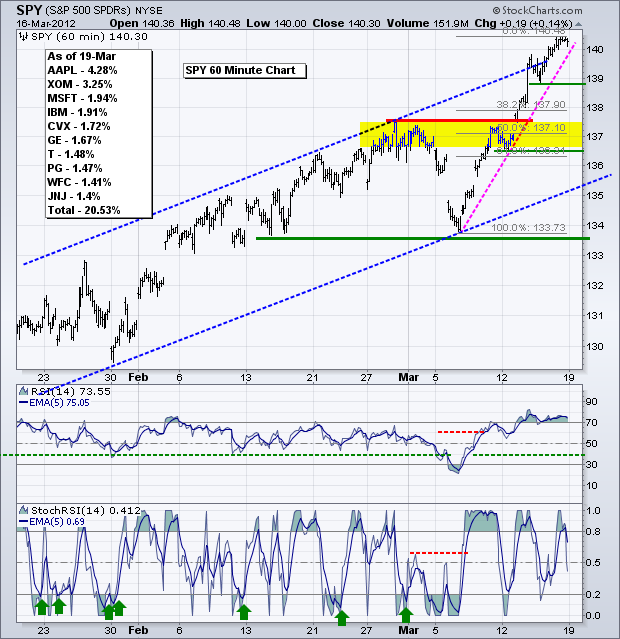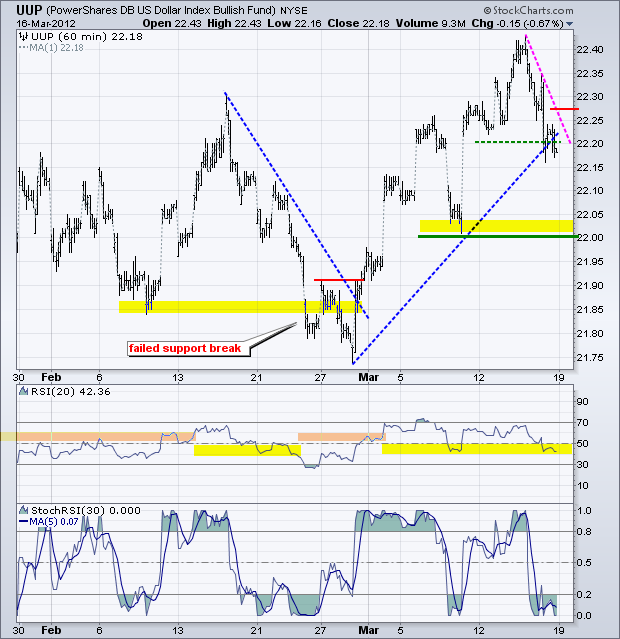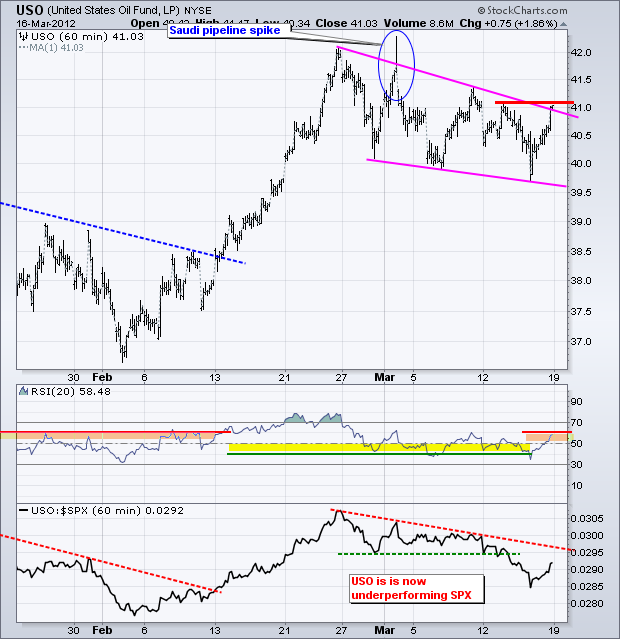Stocks are about as overbought as they have been in a long time. Even so, there are simply no signs of significant or sustained selling pressure. Declines, such as those seen in late January or early March, have been short affairs lasting just a few days. The subsequent rallies proved stronger and carried stocks to new highs. With the most recent surge, the S&P 500 ETF (SPY) moved from ±134 to ±140 in eight days (+4.4%). We do not need a momentum oscillator to know that this has created a short-term overbought situation. Also note that SPY is up some 21% since its late November low and up some 30% since its early October low. Big moves indeed. Short-term, the swing is up on the 60-minute chart with first support marked at 138.8. A move below this level would break the steep eight day trendline and first support. While negative, I would only look for a throwback to the 137 area, which is broken resistance. The 137 area also marks a 50% retracement of the eight day advance.
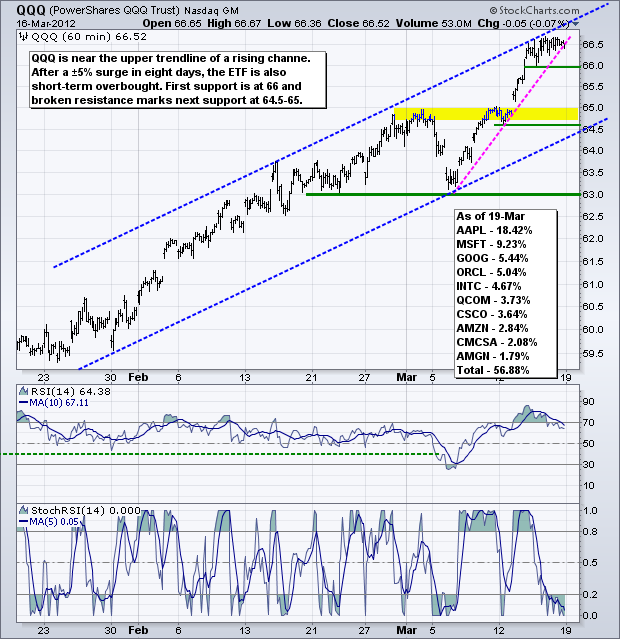

**************************************************************************
The 20+ Year T-Bond ETF (TLT) is as oversold as the stock market is overbought. With the breakdown over the last eight days, the ETF is clearly in a medium-term downtrend and lower prices are expected. Oversold conditions argue for a bounce, but I am not sure how far it will extend because the medium-term downtrend could pull trump at anytime. Broken support turns resistance in the 114.5-115 area.
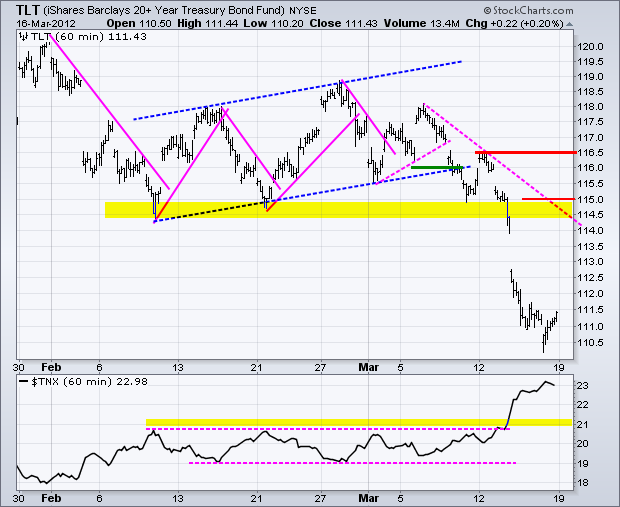
**************************************************************************
The US Dollar Fund (UUP) took a big hit the last two days and broke below first support. While negative, I think the bigger trend is up and this minor pullback will reverse sooner rather than later. Notice that RSI moved to its support zone (40-50), which is the first place to look for a bounce. I am marking minor resistance at 22.28 and a move above this level would be the first sign of an upturn. Key support remains at 22.
**************************************************************************
Oil got a boost from a falling Dollar on Friday and the US Oil Fund (USO) is challenging resistance in the 41 area. This is a make-or-break area for crude. The decline over the last few weeks formed a long falling wedge. After the sharp advance in February, this looks like a bullish continuation pattern. However, a breakout is needed to fully reverse this 3-4 week decline and signal a continuation higher. Chartists should keep an eye on stocks and the Dollar. Softness in an overbought stock market and an upturn in the Dollar could prevent a breakout here.
**************************************************************************
Gold is also influenced by stocks and the Dollar, and perhaps even treasuries. Gold is positively correlated to stocks, negatively correlated with the Dollar and positively correlated with Treasuries. Rising US interest rates are making the real turn on treasuries positive and this reduces demand for gold. The Gold SPDR (GLD) remains in a clear downtrend with a falling wedge. First resistance is set at 162 and key resistance at 165 for now.
**************************************************************************
Key Economic Reports:
Mon - Mar 19 - 10:00 - NAHB Housing Tue - Market Index
Tue - Mar 20 - 08:30 - Housing Starts/Building Permits
Wed - Mar 21 - 07:00 - MBA Mortgage Index
Wed - Mar 21 - 10:00 - Existing Home Sales
Wed - Mar 21 - 10:30 - Crude Inventories
Thu - Mar 22 - 08:30 - Initial Claims
Thu - Mar 22 - 10:00 - FHFA Housing Price Index
Thu - Mar 22 - 10:00 - Leading Indicators
Fri - Mar 23 - 10:00 - New Home Sales
Charts of Interest: Tuesday and Thursday in separate post.
This commentary and charts-of-interest are designed to stimulate thinking. This analysis is not a recommendation to buy, sell, hold or sell short any security (stock ETF or otherwise). We all need to think for ourselves when it comes to trading our own accounts. First, it is the only way to really learn. Second, we are the only ones responsible for our decisions. Think of these charts as food for further analysis. Before making a trade, it is important to have a plan. Plan the trade and trade the plan. Among other things, this includes setting a trigger level, a target area and a stop-loss level. It is also important to plan for three possible price movements: advance, decline or sideways. Have a plan for all three scenarios BEFORE making the trade. Consider possible holding times. And finally, look at overall market conditions and sector/industry performance.

